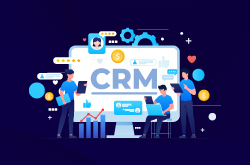
7 Amazingly Easy Steps to Mining Your Potential Customers
Author: Bryan
Step 1: Develop a plan
It is most crucial to develop the right plan with a set objective. To sketch a plan, find out who would make an ideal customer for your business, what department influences the purchase and which roles play the decision makers in buying your products or services. Once these questions are answered, develop a plan to put your marketing messages in their decision making cycle.
Step 2: Make your presence felt
Brand recall plays a key role in making your presence felt. Sales is often influenced when potential customers hear about your products and services in several ways and from different sources. While developing a plan, you have answered few basic questions about your customer; use them to understand the channels that are your customer touch points. Make relevant presence in these channels create a top of mind recall for your brand.
Step 3: Participate in Events
Event marketing has been growing as an independent marketing channel altogether. The potential it offers is incredible if leveraged well. Identify events that attract your potential customers. Event creates the best arena to open new potentials for your business. Be it as exhibitors or attendees make sure to carry right collaterals that speak for your brands. Sponsoring a specific wing of the event also gives you a great mileage in terms of branding. If exhibiting, offer a giveaway to those who walk-in. Pay attention to making these giveaways ambassadors of your brand.
Step 4: Work your personal network
As a professional, you would have built your network of professional peers on LinkedIn etc. Tap this beehive to estimate how many in your network can turn out to be your customers. You can also run a referral program among this network to both drive your business and expand your network in a meaningful way.
Step 5: Study your successful competitors
Consider the success stories of your competitors to be the motivational quotes for you. Understand their strategies in understanding their customers, ways employed to engage them, how constantly these customers are being nurtured, study their branding and promotions on social media. Though what works for them may not work just as well for you, it is sure to have impact on your winning strategies.
Step 6: Ask for feedback
Asking for feedback is one of the easiest touch points to keep the conversation going. This not only helps in gaining insights into improving your offerings, but also is a tactic to re-initiate conversation with those that have gone cold. Answers to many customer questions like whether they found a product that better served their needs? Have they decided they don’t need the product at all? Did they just delay their buying decision? Did they find it difficult to place an order on your web site? Use what you learn to make necessary changes and watch your business grow.
Step 7: Attend meetings and seminars that your prospects attend
If you’ve been doing all that are listed above and haven’t made contacts yet that could lead to sales, try new networking groups. Sign up for local meet up groups, participate in meet ups that are relevant for your business, share your knowledge and network with peer that have similar interests. The key to making the most of these connections is following up after meetings. Not that you are aware of their business interests, you can share content that interests them. Putting forward your offerings or marketing messages can subtly happen alongside these conversations.
Using the Lake B2B tools and technologies, companies are able to cultivate sales-ready leads. Lake B2B provides strategic guidance, relevant insights, and best practices that work in the industry. Contact us at 800-710-5516 or write to [email protected]
About Author
Vice President, Sales has a 20 year track record in B2B marketing and sales. With expertise in B2B Email Appending, Enhancement and Validation made accessible to more than 3000 clients worldwide. An avid traveler, takes keen interest in exploring brand development strategies and unchartered techniques for marketing solutions.




